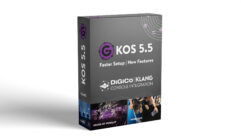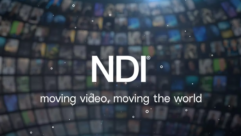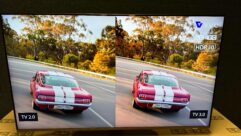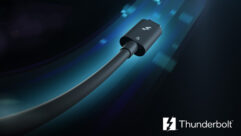5-Minute Interview: Randall Stevens
President and CEO of graphics software developer Mersive Technologies, Randall Stevens, earned a degree in architecture before starting 3D-graphics software development company ArchVision. In 2004, with partners Chris Jaynes and Stephen Webb, Stevens co-founded Mersive Technologies in Lexington, Ky.
President and CEO of graphics software developer Mersive Technologies, Randall Stevens, earned a degree in architecture before starting 3D-graphics software development company ArchVision. In 2004, with partners Chris Jaynes and Stephen Webb, Stevens co-founded Mersive Technologies in Lexington, Ky.
Pro AV: Clustering projectors for a single image isn’t new; what’s different about what Mersive is doing?
Stevens: The problem we tried to solve is: How do you create a very large pixel display? The answer typically has been to cluster a lot of projection devices. The opportunity we saw was in the way the industry has handled it; by manually calibrating them, which creates all kinds of problems, especially if you want to cluster more than two or three projectors. And as you add projectors, the calibration gets more complex. The software we developed takes the human element out of the equation and automatically does the calibration more accurately than a human ever could.
Pro AV: So it’s calibrating each overlapping projected image?
Stevens: The software that does the image processing solves three different problems. First is geometric correction for the display topography. Second, where the images overlap, the light intensity varies from where they don’t. The software computes those differences and compensates for them in the calibration. Third is color correction. To make an image that looks continuous to the human eye, you also have to correct for color, because the color will vary from one projected image to the next.
Pro AV: Does that mean you have to use all the same model of projector?
Stevens: The quick answer is no; we can even fix multiple resolutions of projectors. But let me just say that we can’t perform magic. You can mix and match projectors but for the best results, it’s best to stick to one line of projectors.
Pro AV: What’s the cost, excluding the customer’s hardware?
Stevens: Licensing Sol Server for a four-projector system would cost $27,500. A 15-projector, 27-megapixel system like we showed recently at InfoComm would be $82,500.
Pro AV: You’ve used the term ‘ultra high definition’ — how is that different from high-definition?
5-Minute Interview: Randall Stevens
President and CEO of graphics software developer Mersive Technologies, Randall Stevens, earned a degree in architecture before starting 3D-graphics software development company ArchVision. In 2004, with partners Chris Jaynes and Stephen Webb, Stevens co-founded Mersive Technologies in Lexington, Ky.
Stevens: It’s a term we coined because we found that what we were doing with displays required a new way of thinking about resolution. Traditional displays use standards to describe the number of pixels, the width, the height of the generally fixed proportion of displays. Our technology lets you create displays that can be any size or resolution, depending on how many projection devices you cluster. We did a demonstration of a 10-foot-by-8-foot array of 80 projectors with 55 million pixels. High-definition resolution at 1920 x 1080 is just over 2 million pixels. So our display was 25 times HD resolution.
Pro AV: You’re working with the National Science Foundation to define new standards, right?
Stevens: Yes, through a grant they gave us. We can now create a pixel palette of an infinite number of pixels by clustering devices, so how do you describe that resolution in a standard way? We’re seeking partners, not just from industry but also from research and academe for a technology advisory panel to work on this.
Pro AV: You’re defining a standard for ultra definition?
Stevens: We define ultra definition as anything beyond high definition. Historically, displays have been of a fixed size and resolution, and they hook up to a device that spits out the image information in that size and resolution. They have to conform to a certain standard to be able to talk to each other. When the display becomes any size or resolution, the devices no longer knows how to talk to it. So part of what we’re doing is with Stingray is developing a middle layer, what we call a display operating system, of how to work with these very high-resolution pixel palettes.










